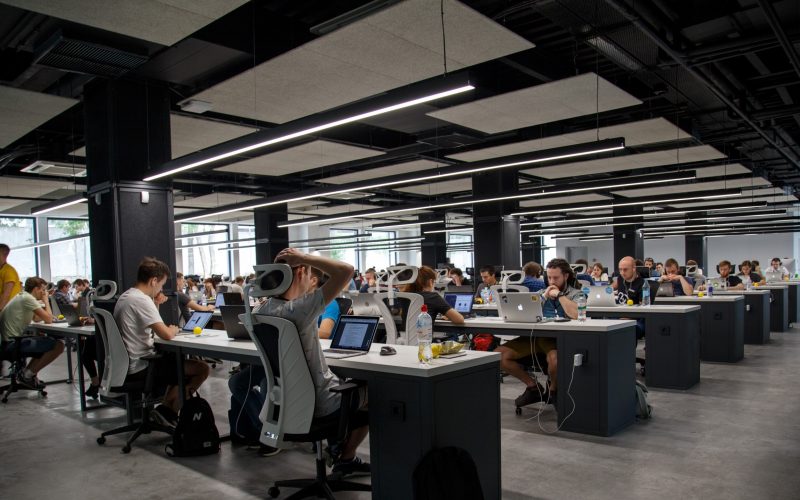Salesforce. com Inc.’s Chief Information Officer says remote work is here to stay.
But that hasn’t kept her and the IT team from working with the company’s product engineers to write and test new software designed to help businesses return to physical offices in the wake of the coronavirus pandemic.
Jo-ann Olsovsky, who leads Salesforce’s internal information technology department, said she expects most companies in post-Covid markets to adopt a hybrid approach to the workplace, where employees split their time between coming into the office and working from home.
Packaged into Work.com, a once-dormant offering that Salesforce relaunched in May as a pandemic-management platform, the refurbished apps are meant to become part of everyday office life, Ms. Olsovsky said. They enable employers to stagger work shifts and provide staff with daily health checks before entering a building, among other measures.
The platform and new apps are also an example of the company’s expansion beyond customer-relationship management software. On Thursday, Salesforce reported revenue of $5.82 billion in the latest quarter, up 20% from the same period last year, driven by record sales of remote-work and other business continuity apps.
Salesforce itself expects more than half of its employees to continue working from home going forward. In February the company’s chief people officer said that when deemed safe by health officials, more than 65% of its 54,000 global workers will come into the office only one to three days a week, up from 40% before the pandemic.
With many employees working remotely full-time, the company envisions reducing its real-estate footprint and revamping office layouts, replacing rows of desks with collaboration spaces and open-air meeting rooms.
Fluctuating waves of Covid-19 case numbers have led to widespread uncertainties over the timing of workplace reopenings. A February survey of 2,200 U.S. workers by the Conference Board, a research group, found that 44% of employees polled didn’t know their company’s plans to return to the workplace. That is up from last September, when 37% of respondents polled by the group said they were unclear on their back-to-the-office plan.
“We’ve had customers coming to us asking about our own return-to-work plan,” said Ms. Olsovsky. “So we partnered with our own product teams and worked with them to write a product and stood it up inside the company,” she said.
Ms. Olsovsky said the IT team often acts as “customer zero” in trial runs for new products and services.
Bobby Cameron, vice president and principal analyst at tech research firm Forrester Research Inc., said as firms across the economy digitize business functions, the insight developed by internal-tech CIOs at tech vendors is becoming more relevant to the products they sell.
“The best enterprise tech companies have CIOs who are builders,” said Elizabeth Golluscio, managing vice president at research and consulting firm Gartner Inc. She said CIOs who use their own products know how well they perform for customers, and how they can be improved.
Among other features, Salesforce’s back-to-work apps include a scheduling app that lets workers choose weekly shift preferences, allowing employers to manage floor capacities and avoid bottlenecks. A wellness-assessment app provides a daily check-in to monitor workers’ health and assess approvals to enter the office building, along with contact tracing and mapping features.
With oversight from the Ms. Olsovsky’s IT team, the new features were put to the test at the company’s seven offices in Australia, which began the process of reopening as early as August, though employees now will have the option of working from home through at least the end of July, the company said.
Australia further eased pandemic restrictions in October, including rules that kept offices and retail outlets mostly empty.
Ms. Olsovsky’s team also monitored similar product tests at the company’s offices in Japan, she said.
Based on employee feedback, early testing showed the need to incorporate the tool with other business applications and processes to get a fuller view of a company’s organization, she said.
“We’re all asking ourselves what is that new normal,” Ms. Olsovsky said. “The new normal isn’t reverting back to the old normal.”


